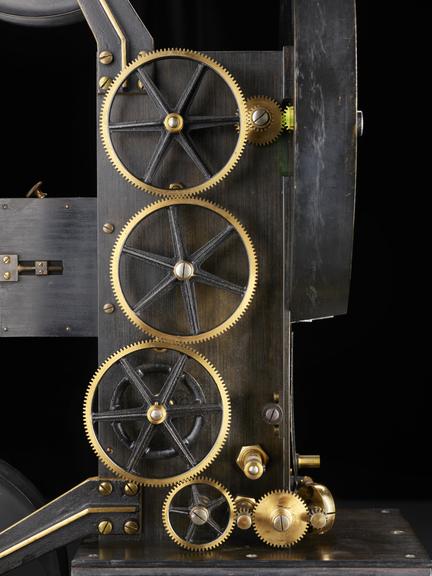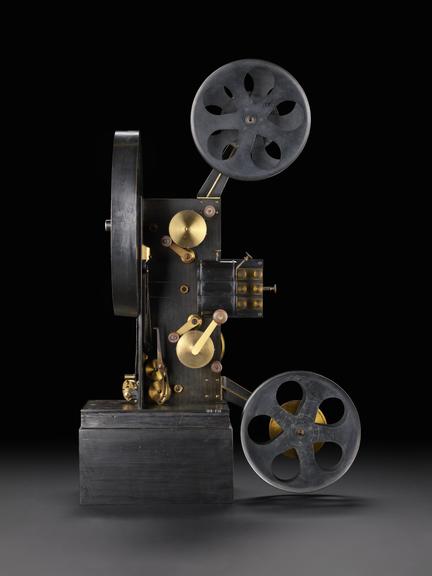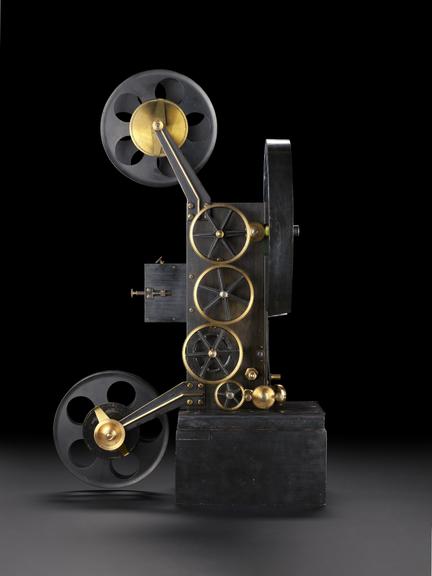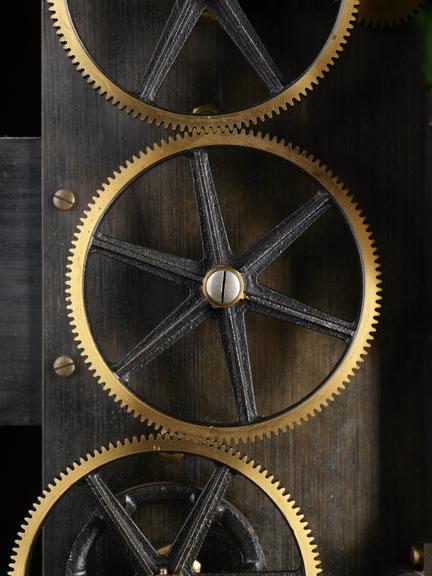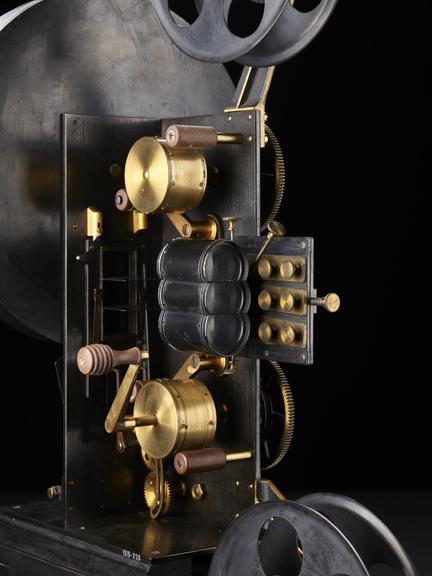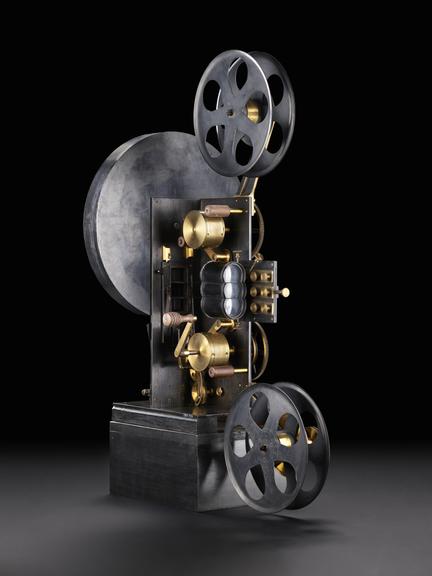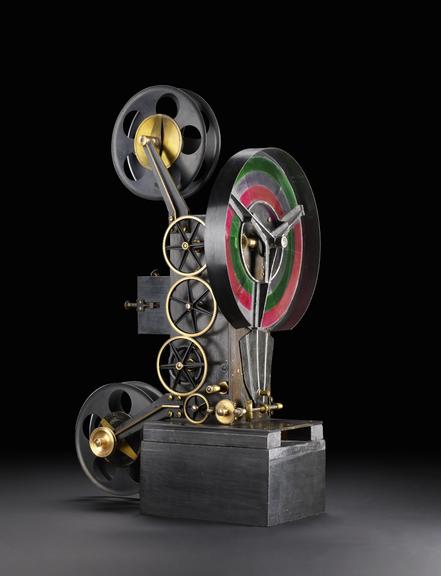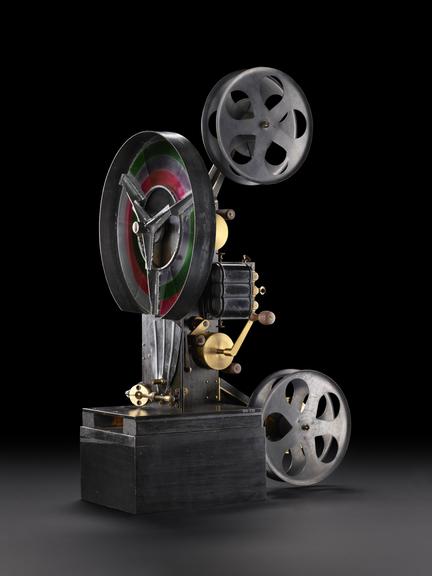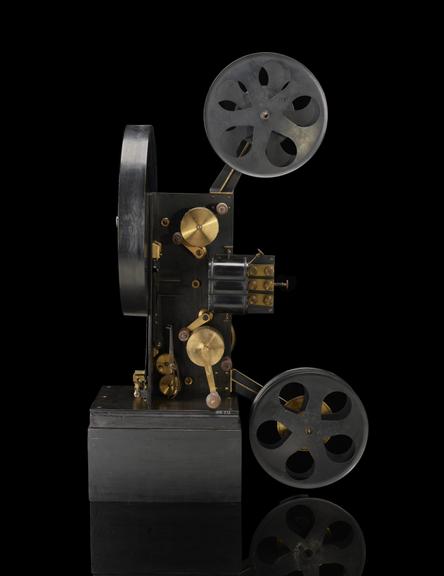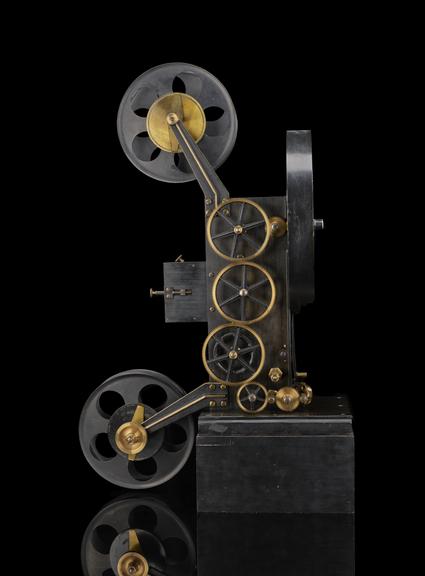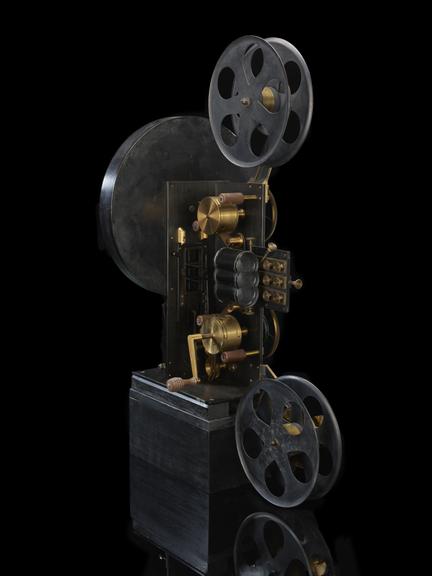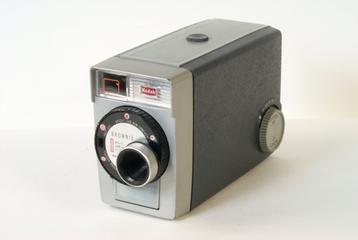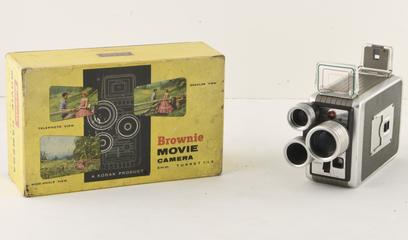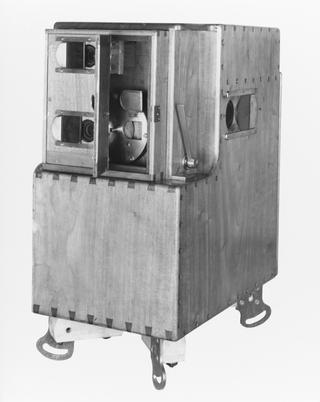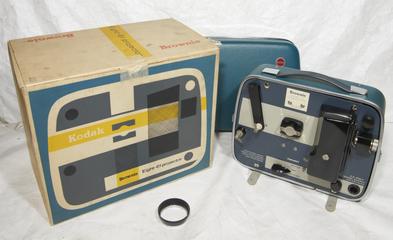38 mm Lee and Turner three-colour ciné film projector
Projector for the Lee and Turner 38mm sequential-frame three-colour film process. Made by Alfred Darling, 1902. This has a three-frame gate and three lenses designed to align the three images in register on a screen.
More
In 1899 Edward R Turner, financed by F Marshall Lee, made the first attempt to invent a process of colour cinematography. Turner devised a camera that filmed consecutive frames through red, green and blue filters on 38mm film. The projector had a triple gate and lens that superimposed three frames simultaneously on the screen. As the film passed through the projector, a rotating filter wheel behind the lens ensured each frame was shown with its appropriate colour. The process, however, proved impractical. On Turner's death in 1903, Charles Urban acquired the rights. He subsequently worked with George Albert Smith, who, adapting the principle, invented the commercially-successful Kinemacolor process in 1906.
- Measurements:
-
overall: 745 mm x 330 mm x 490 mm, 16 kg
- Materials:
- wood (unidentified) , brass (copper, zinc alloy) , glass , plastic (unidentified) and metal (unknown)
- Object Number:
- 1919-230/1
- type:
- cine projector
- Image ©
- The Board of Trustees of the Science Museum




